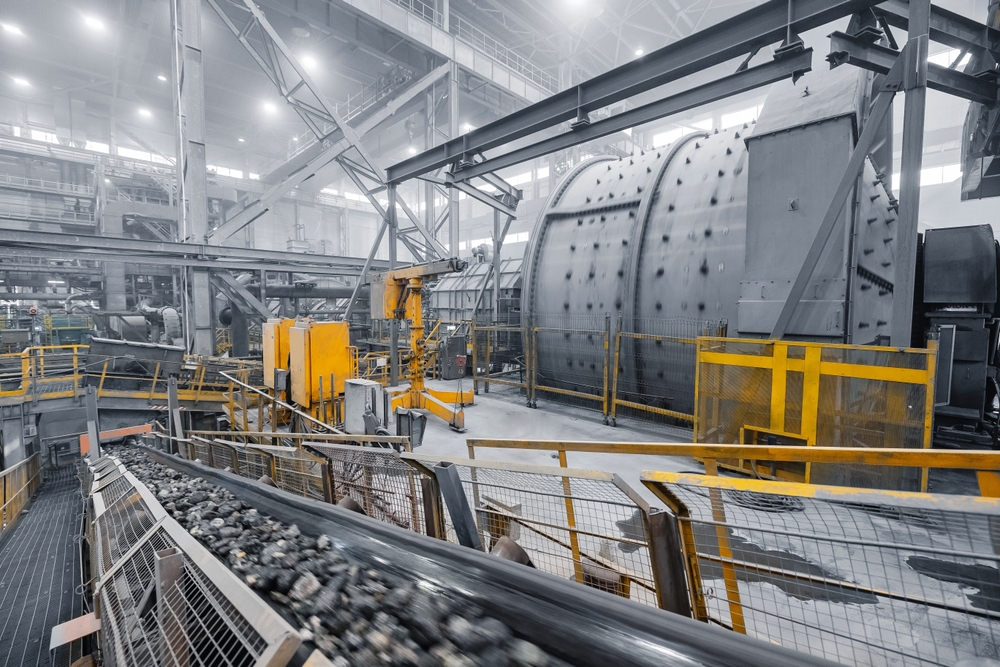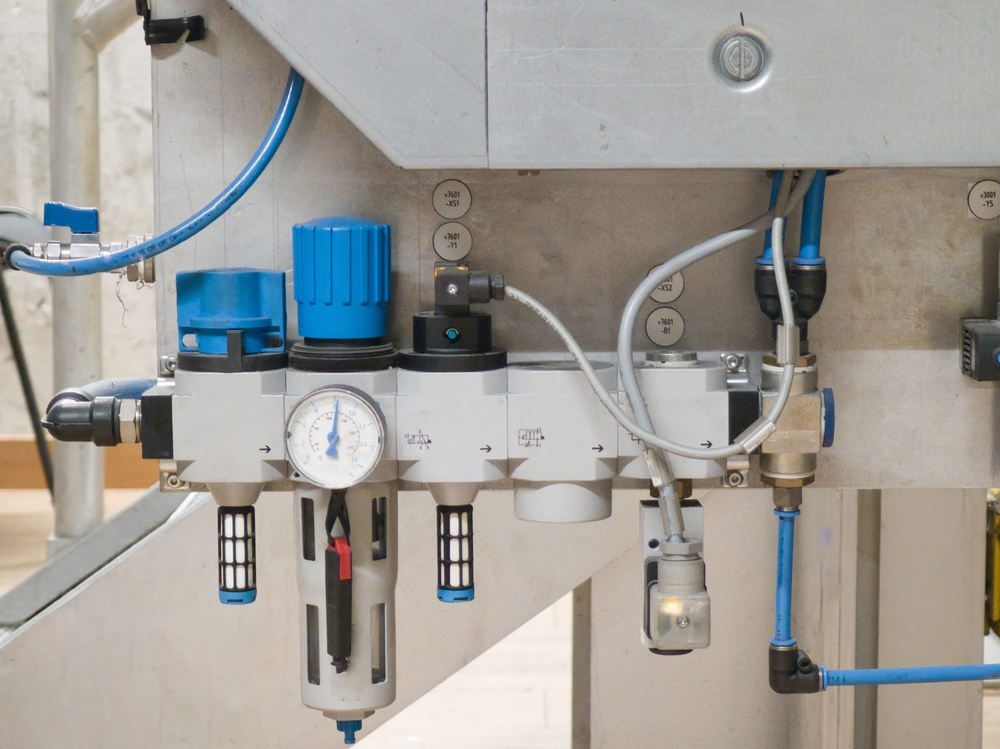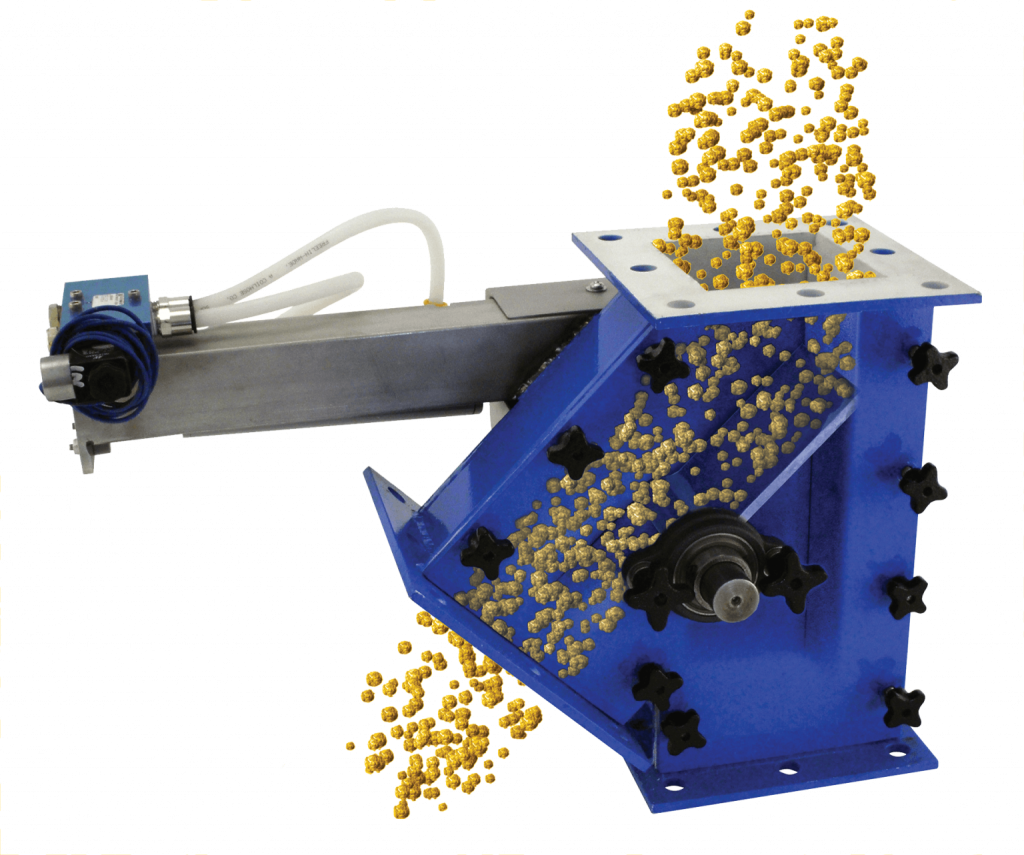When you’re running a bulk material handling system, every component plays a role in your bottom line. However, when it comes to system flow, contamination risk, and maintenance downtime, your diverter valve is a game-changer.
Whether you’re handling powders, grains, or abrasive minerals, the right diverter valve doesn’t just direct material—it protects your entire operation from costly errors.
So, how do you decide between a clean flow diverter and a rugged traditional design?
In this post, we take a closer look at Roto-Disc® clean flow diverters versus traditional diverter valves—breaking down the differences to help you choose the best fit for your system, materials, and operational goals.

What Is a Clean Flow Diverter?
A clean flow diverter is engineered with hygiene, ease-of-maintenance, and precision in mind. Roto‑Disc’s clean flow designs, like the Roto‑Blade™, feature smooth, full-bore interiors and minimal dead zones to reduce residue buildup.
These diverters are ideal for:
- Food and beverage dosing lines with allergen sensitivity
- Pharmaceutical or nutraceutical powder blending
- Specialty chemical systems that switch between products
- Any system requiring fast, compliant cleanability
Why choose Roto‑Disc’s Heavy-Duty Clean Flow Diverter?
- Designed for clean-in-place (CIP) compatibility
- Smooth surfaces promote flow and reduce bridging
- Sanitary interior geometry speeds validation and cleaning
- Built with durable materials suitable for fine or sticky powders
Traditional Diverter Valves: Rugged and Cost-Efficient
If your system is moving abrasive, high-volume materials, and sanitation isn’t your top priority, traditional diverter valves are often the most practical and cost-effective solution.
These valves are the workhorses of bulk material handling: less focused on cleanability, but unmatched when it comes to withstanding wear, tear, and pressure. They’re still a smart choice when:
- You’re conveying coarse or abrasive materials like aggregates, minerals, or cement
- Your process doesn’t require frequent product changeovers
- Sanitation isn’t critical (e.g., plastics, raw feedstock, or chemical pellets)
- Your team is balancing performance with budget-conscious decisions

Roto-Disc’s Heavy-Duty Spherical Diverter Valve is a prime example. It’s built to:
- Hardened components resist erosion from abrasive solids
- Simplified actuator options make installation easier
- Designed for long operational life in high-volume systems
Side-by-Side Comparison
| Feature | Clean Flow Diverter | Traditional Diverter Valve |
|---|---|---|
| Sanitary/CIP Capable | Yes | No |
| Ideal Materials | Fine powders, food, pharma, allergens | Abrasive solids, pellets, aggregates |
| Cleaning Frequency | Quick and easy to clean | Requires full disassembly |
| Maintenance Requirements | Low | Moderate to high |
| Best Used In | Multi-product lines, sanitary apps | Single product lines, rugged bulk systems |
| Example Roto-Disc Solution | Roto-Blade™ Clean Flow Diverter Valve | Roto-Vert™ Heavy-Duty Spherical Valve |
Valve Selection for Bulk Material Handling: How to Decide
When choosing between clean flow and traditional diverter valves, here’s what to prioritize:
- Sanitation Requirements: Clean flow is the solid choice if your process involves allergens, pharmaceuticals, or any other applications requiring compliance.
- Material Abrasiveness: Traditional diverters with hardened parts may be a better long-term investment for materials such as rock, minerals, or glass.
- Product Changeovers: If you switch products regularly, choose clean flow to reduce cleaning time and minimize contamination risk.
- Cycle Frequency: High-cycle environments require rugged reliability—both types offer this, but clean flow designs often last longer with less maintenance.
- Budget & Footprint: Traditional designs typically come in at a lower cost and are simpler to install when space is tight.
Need help evaluating your system? Our team works directly with engineers and plant managers to identify the valve that delivers peak performance, regardless of your constraints.

Engineering Insights: Wear & Diverter Valve Design
According to Processing Magazine’s article “Conquering the Main Wear Factors in Diverter Valves,” erosion is a major failure mode in pneumatic and gravity systems, especially with abrasive powders.
We address this by:
- Using hardened materials (like tungsten-carbide liners) in wear-prone parts
- Designing inspection ports for easy maintenance without removing valves from the line
- Offering replaceable seals and wear components in our heavy-duty diverter series
These features help extend service life and reduce unplanned downtime in challenging environments.

The Roto-Disc Difference
At Roto-Disc, diverter valves aren’t an afterthought. They’re the foundation of flow control systems that work smarter and last longer. With decades of experience in industries like food, pharma, plastics, and minerals, we engineer valves that solve real-world problems, without overcomplicating your setup.
- Roto-Blade™: A true clean flow workhorse with heavy-duty capabilities
- Roto-Vert Flate™: Inflatable seal diverter that’s perfect for allergen control
- Roto-Vert™ Spherical Valve: Your go-to traditional diverter with rugged performance
Don’t Leave Flow Control to Chance
Diverter selection isn’t just a technical decision—it’s a strategic one. The wrong choice can mean costly downtime, product contamination, or even safety issues.
Our engineers work directly with you to ensure the diverter you choose is the best fit for your materials, processes, and long-term goals. Request a free quote from Roto-Disc today!
